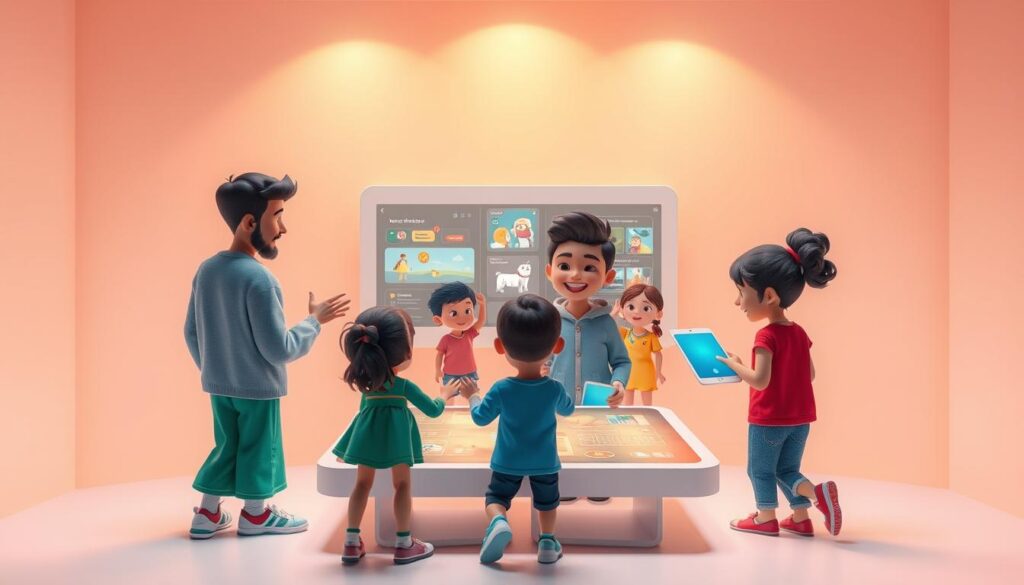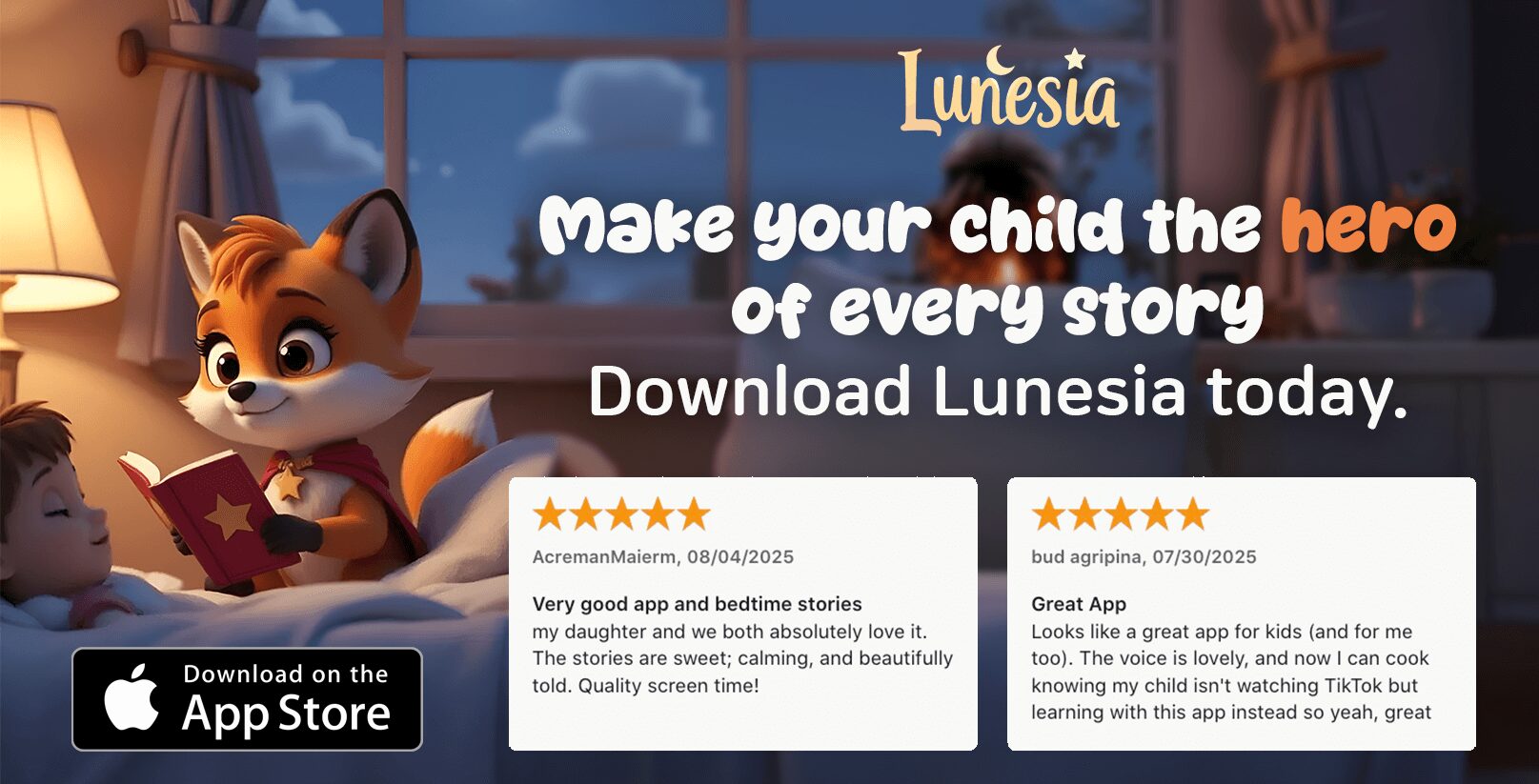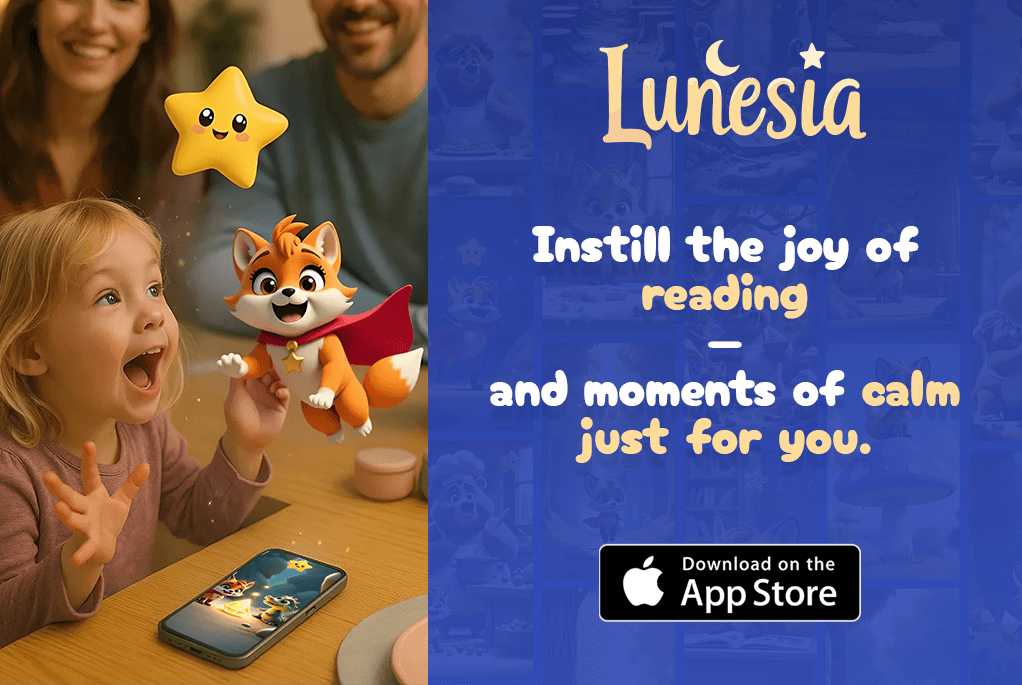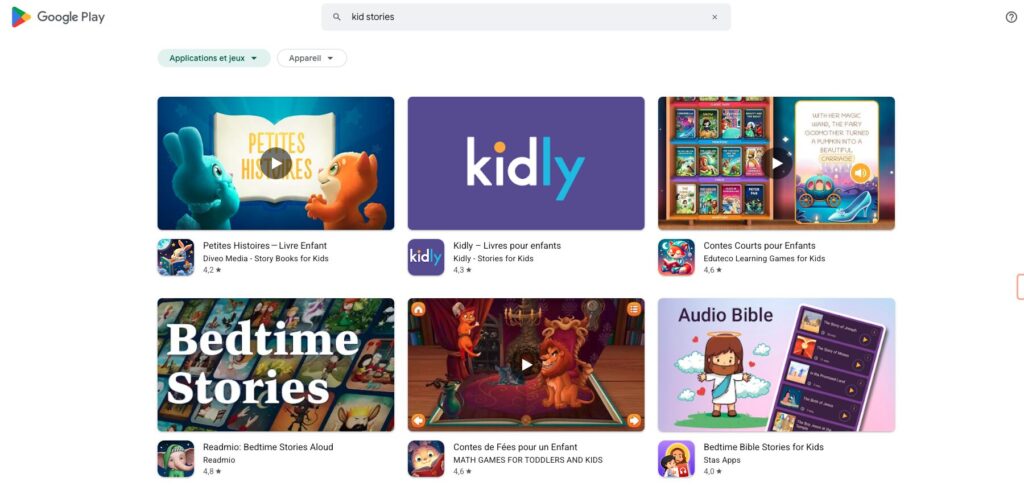I remember the first time my child picked up a book and asked me to read it with them. It wasn’t just any story—it was an interactive one, filled with questions, sound effects, and even a little game at the end. That moment changed everything. Suddenly, learning to read wasn’t a chore; it was an adventure.
Interactive stories have a magical way of turning reading into a playful activity. They engage children’s minds, spark their curiosity, and make them eager to explore more. Research shows that kids who participate in interactive reading activities improve their comprehension and vocabulary faster than those who don’t.
If you’re looking for ways to make learning to read exciting, you’re in the right place. This guide is packed with practical tips and creative ideas to help you transform reading time into a fun, bonding experience. Let’s dive in and discover how interactive stories can unlock your child’s love for books!
Understanding the Magic of Interactive Stories
The magic of interactive storytelling lies in its ability to engage and inspire young minds. Unlike traditional books, these stories invite children to participate actively, making them feel like part of the narrative. This involvement sparks curiosity and fosters a deeper connection with the material.
One of the most remarkable aspects of interactive stories is how they enhance language development. By asking questions, encouraging responses, and introducing new vocabulary, these stories help children build their language skills naturally. It’s like turning learning into a game—one they’re eager to play.
Interactive stories also play a crucial role in improving comprehension. When children make choices or predict outcomes, they’re actively processing the story. This engagement strengthens their ability to understand and retain information, laying a solid foundation for literacy.
Behind the scenes, there’s fascinating science at work. Interactive storytelling leverages principles like word recognition, orthography, and phonics. These elements help children decode words and understand their meanings, making the process of learning to read more intuitive and enjoyable.
Tailoring stories to a child’s language abilities can also boost their confidence. When they feel capable of engaging with the material, they’re more likely to embrace new challenges. This personalized approach nurtures a love for stories that can last a lifetime.
Digital media has revolutionized how we tell stories. Platforms like Twine and Inklewriter allow creators to craft branching narratives that adapt to the reader’s choices. These tools make storytelling more dynamic and accessible, opening up endless possibilities for creativity.
Interactive initiatives, such as read-alouds with “Turn and Talk” exercises, further enhance engagement. These activities encourage children to reflect on the story and share their thoughts, deepening their comprehension and fostering critical thinking.
Ultimately, interactive stories are more than just entertainment—they’re powerful tools for learning. By combining fun with education, they create experiences that inspire a lifelong love for books and literacy.
The Benefits of Fun Learning for Reading and Beyond
When learning feels like play, children naturally absorb skills and knowledge. Interactive activities not only make lessons enjoyable but also foster deeper understanding and retention. Let’s explore how fun learning methods benefit cognitive development and keep kids motivated.
Enhancing Cognitive Development
Engaging activities stimulate the brain, helping children develop critical thinking and problem-solving abilities. For example, word recognition games improve fluency while boosting memory. These activities make learning feel like a game, encouraging kids to stay curious and explore new concepts.
Research shows that interactive learning enhances mental agility. Children who participate in such activities often demonstrate better focus and creativity. This approach not only builds academic skills but also prepares them for real-world challenges.
Boosting Motivation and Engagement
Keeping kids motivated is key to their success. Fun learning methods tap into their natural curiosity, making them eager to participate. For instance, storytelling with role-playing elements can turn a simple lesson into an unforgettable adventure.
Nurturing intrinsic motivation leads to long-term academic growth. When children enjoy the process, they’re more likely to persist even when tasks become challenging. This positive attitude toward learning sets the stage for lifelong success.
| Activity | Benefit |
|---|---|
| Word Recognition Games | Improves fluency and memory |
| Storytelling with Role Play | Boosts creativity and engagement |
| Interactive Quizzes | Enhances critical thinking |
By incorporating play into structured lessons, we create an environment where children thrive. Fun learning isn’t just about enjoyment—it’s about building a foundation for future success.
Engaging Storytelling Techniques That Spark Imagination
One of the most exciting ways to spark a child’s imagination is through interactive storytelling. By combining visuals, sound, and participation, these techniques turn stories into immersive experiences. Let’s explore how you can make storytelling vivid and engaging for young learners.
Using Visual Aids and Sound Effects
Visual aids and sound effects bring stories to life. For example, using pictures or props helps children visualize the narrative. Adding sound effects, like the rustling of leaves or the roar of a lion, makes the story more dynamic and memorable.
Research shows that sensory details boost retention. When children hear and see the story, they connect words to experiences. This approach not only entertains but also enhances word recognition and comprehension.
Interactive Dialogue and Role Play
Interactive dialogue encourages children to engage with the story. Ask questions like, “What do you think happens next?” or “How would you feel in this situation?” This keeps them involved and improves their narrative understanding.
Role-playing is another powerful technique. Let children act out characters or scenes. This hands-on activity reinforces comprehension and retention. For instance, pretending to be a brave knight or a curious explorer makes the story personal and exciting.
| Technique | Benefit |
|---|---|
| Visual Aids | Enhances visualization and engagement |
| Sound Effects | Makes stories vivid and memorable |
| Interactive Dialogue | Improves narrative understanding |
| Role Play | Reinforces comprehension and retention |
These techniques not only entertain but also build essential skills. By making storytelling interactive, you create a foundation for lifelong learning and creativity.
Crafting Interactive Narratives for Children
Every child has unique interests, and tailoring stories to match them can transform learning into an adventure. Personalized narratives make stories more relatable and meaningful, helping young readers connect deeply with the material.
One way to personalize stories is by incorporating a child’s favorite themes or characters. For example, if they love animals, create a tale about a brave lion or a curious fox. This approach not only captures their attention but also enhances their meaning-making process.
Interactive narratives also allow children to make choices within the story. Whether it’s deciding what happens next or selecting a character’s path, these decisions empower them to become active participants. This sense of control fosters a love for storytelling and encourages them to explore more.
Parents can further personalize stories by reflecting their child’s personality. If they’re adventurous, craft tales of exploration. If they’re creative, include opportunities for drawing or imagining new endings. This tailored approach ensures the story resonates with the child on a personal level.
Research shows that personalized narratives improve comprehension and retention. When a story aligns with a reader’s interests, they’re more likely to engage deeply and remember the details. This connection between personal interest and understanding lays a strong foundation for early literacy.
Here are some techniques to make stories more relatable:
- Use familiar settings or situations the child encounters daily.
- Include characters that reflect their hobbies or dreams.
- Ask questions that encourage them to think about their own experiences.
By crafting interactive narratives that reflect a child’s world, you create a powerful tool for learning and growth. These stories not only entertain but also inspire a lifelong love for storytelling.
Utilizing Technology to Enhance Interactive Storytelling
Technology has opened up a world of possibilities for making storytelling more engaging and effective. Educational apps and digital tools are transforming how children interact with stories, turning passive listeners into active participants. These innovations not only make learning fun but also support essential skills like comprehension and vocabulary development.
One of the most exciting advancements is the integration of educational apps into storytelling. These apps often include features like animations, sound effects, and interactive questions that keep children engaged. For example, a program might ask kids to choose what happens next in the story, making them feel like they’re part of the adventure.
Digital tools also personalize the learning experience. Adaptive technologies adjust the difficulty level based on a child’s progress, ensuring they’re always challenged but not overwhelmed. This tailored approach makes guided reading sessions more effective and enjoyable.
Here are some benefits of using technology in storytelling:
- Encourages active participation and decision-making.
- Provides instant feedback to help children learn from mistakes.
- Makes stories more accessible with features like text-to-speech.
Popular platforms like Epic! and ReadingIQ are widely used by schools and parents. These apps offer a vast library of interactive stories, quizzes, and games that foster a structured yet fun learning environment. Research shows that children using these tools often demonstrate improved comprehension and retention.
As a parent, exploring these tech options can complement traditional storytelling methods. By combining the best of both worlds, you can create a rich, interactive experience that nurtures your child’s love for stories and learning.
Interactive Reading Strategies for Young Learners
Building a strong foundation in literacy starts with engaging strategies that make learning enjoyable. For young learners, interactive activities can transform the process of mastering word recognition, letter sounds, and spelling into a playful adventure. These methods not only keep children motivated but also help them develop essential skills naturally.
One effective strategy is to focus on individual words. Activities like word matching games or flashcards help children recognize and understand common vocabulary. For example, you can create a game where kids match pictures to the correct word. This reinforces their ability to connect meaning with language.

Understanding letters and their sounds is another critical step. Phonics-based games, such as “I Spy” with letter sounds, make this process fun. You might say, “I spy something that starts with the sound ‘b’,” encouraging kids to identify objects around them. This strengthens their phonemic awareness, a key skill for early literacy.
Introducing basic spelling patterns early on also sets the stage for fluency. Simple activities like building words with magnetic letters or writing them in sand can make spelling practice engaging. Repetition is key here—consistent practice helps children internalize these patterns and build confidence.
Here are some interactive activities to try:
- Word scavenger hunts to find items around the house.
- Letter-sound bingo to reinforce phonemic awareness.
- Spelling bees with fun rewards to motivate participation.
| Activity | Benefit |
|---|---|
| Word Matching Games | Improves vocabulary and recognition |
| Phonics “I Spy” | Strengthens letter-sound associations |
| Magnetic Letter Spelling | Builds spelling confidence |
Interactive strategies like these not only make learning fun but also lead to more effective word recognition. By incorporating play into structured lessons, you create an environment where young learners thrive. Remember, the goal is to nurture a love for language that lasts a lifetime.
Practical Tips for Incorporating Interactive Stories in Daily Routines
Incorporating interactive stories into your child’s day can turn ordinary moments into adventures. By weaving these stories into your routine, you create a natural flow that makes learning feel effortless and fun. Here’s how to get started.
Setting Dedicated Reading Times
Consistency is key when building habits. Set aside specific time each day for storytelling, whether it’s before bed or during a quiet afternoon. This structured approach helps children know what to expect and builds anticipation.
Research shows that daily storytelling improves language development and cognitive skills. As one expert puts it,
“Routine transforms learning into a habit, making it a seamless part of life.”
Balancing screen and print time is also important. Alternate between digital apps and physical books to keep things fresh. For example, use an app in the morning and a storybook at night. This variety keeps children engaged while fostering a love for both formats.
Here are some actionable steps to integrate interactive stories into your day:
- Start with a 10-minute session and gradually increase the duration.
- Choose stories that align with your child’s interests to keep them hooked.
- Encourage participation by asking questions or letting them make choices in the story.
Regular practice leads to gradual improvements in skills. Over time, you’ll notice enhanced comprehension, vocabulary, and focus. Structured order in routines supports the development of lifelong habits.
| Tip | Benefit |
|---|---|
| Set Specific Times | Builds consistency and anticipation |
| Balance Screen and Print | Keeps engagement high |
| Encourage Participation | Improves comprehension and creativity |
By following these tips, you can create a daily routine that nurtures your child’s love for stories and learning. Remember, small steps lead to big results!
Selecting the Right Interactive Books and Apps
Choosing the right interactive books and apps can make a world of difference in your child’s learning journey. With so many options available, it’s essential to find resources that match their level and interests. A well-chosen story or app can spark curiosity, boost comprehension, and create a positive relationship with learning.
Evaluating Content and Age Appropriateness
When selecting interactive books or apps, consider your child’s age and developmental stage. Look for content that aligns with their level of understanding. For younger children, simple narratives with vibrant visuals work best. Older kids might enjoy more complex stories with interactive elements like quizzes or branching paths.
Quality matters too. Ensure the text is engaging and the design is user-friendly. As one expert puts it,
“The best interactive resources are those that balance education with entertainment.”
- Check reviews and ratings from other parents or educators.
- Look for apps or books that encourage active participation.
- Ensure the content is age-appropriate and aligns with your child’s interests.
Balancing Screen Time and Print
While digital tools offer exciting possibilities, it’s important to balance screen time with traditional reading. Physical books help children develop print awareness and fine motor skills. Alternate between digital and print formats to keep things fresh and engaging.
For example, use an app in the morning and a storybook at night. This approach not only maintains variety but also reinforces the relationship between different learning formats.
| Criteria | Digital | |
|---|---|---|
| Engagement | Interactive features like animations and quizzes | Tactile experience and focus on text |
| Accessibility | Portable and easy to use on devices | No need for batteries or internet |
| Learning Focus | Encourages active participation | Develops print awareness and concentration |
By carefully selecting interactive resources and balancing formats, you can create a rich learning environment that nurtures your child’s love for stories. Remember, the right choice can turn learning into an adventure!
Developing Comprehension and Word Recognition Through Play
Playful activities can transform the way children learn, making the process both fun and effective. When learning feels like a game, kids naturally absorb skills like comprehension and word recognition. This approach not only boosts their accuracy but also keeps them engaged and motivated.
One effective method is to integrate play into traditional learning techniques. For example, word matching games or scavenger hunts can reinforce vocabulary and spelling. These activities make learning feel less like a chore and more like an adventure.
Here’s how playful interactions help reduce anxiety and improve retention:
- Games encourage active participation, making learning more memorable.
- Interactive activities build confidence by allowing kids to learn at their own pace.
- Playful approaches create a positive association with learning, fostering long-term success.
Balancing structured methods with spontaneous play is key. While traditional techniques provide a solid foundation, games add excitement and variety. This combination ensures that children develop both accuracy and fluency in their skills.
Here are some practical activities to try:
| Activity | Benefit |
|---|---|
| Word Bingo | Reinforces vocabulary and recognition |
| Phonics Hopscotch | Improves letter-sound associations |
| Story Dice | Encourages creativity and comprehension |
By incorporating play into learning, you create an environment where children thrive. This approach not only makes the process enjoyable but also lays the foundation for lifelong skills. Remember, when learning feels like play, kids are eager to explore and grow!
Building a Lifelong Relationship with Books and Reading
Books have the power to shape lives, and fostering a love for them early on can create lasting benefits. When children develop a personal connection with stories, they not only improve their fluency but also build a foundation for lifelong learning. This bond transforms books from mere tools into cherished companions.
Regular engagement with stories helps children grow more confident over the years. As they explore new worlds and ideas, their vocabulary expands, and their comprehension deepens. This consistent practice nurtures a sense of achievement, making them eager to dive into more books.
According to research, children who read for pleasure are more likely to excel academically. A study by the National Literacy Trust found that those who enjoy books are 13 times more likely to read above their expected level. This connection between enjoyment and success highlights the importance of making reading a joyful experience.
Here are some strategies to help your child build a lasting relationship with books:
- Encourage them to choose stories that spark their curiosity.
- Set aside dedicated time for shared storytelling or independent reading.
- Combine pleasure reading with academic practice to create a balanced approach.
Books also play a vital role in personal growth. They help children understand emotions, develop empathy, and explore diverse perspectives. As one parent shared,
“Seeing my child connect with a character’s journey has been transformative—it’s like watching them grow through the pages.”
By nurturing this relationship, you’re not just teaching a skill—you’re opening the door to a lifetime of discovery and growth. Let’s inspire the next generation to fall in love with books, one story at a time.
The Role of Parents and Educators in Guided Reading Sessions
Guided reading sessions, when led by parents or educators, can significantly shape a child’s academic journey. These sessions not only prepare children for school but also enhance their overall ability to learn. By providing structured support, adults play a vital role in fostering confidence and curiosity in young learners.
Creating Supportive Reading Environments
A supportive environment is key to successful guided reading. Start by setting up a cozy, distraction-free space where children feel comfortable. Add soft lighting, comfortable seating, and a variety of books to spark interest. According to a researcher, “Children thrive in spaces where they feel safe and encouraged to explore.”
- Include a mix of fiction and non-fiction books to cater to different interests.
- Use bookmarks and reading logs to track progress and celebrate milestones.
- Encourage children to decorate the space with their artwork or favorite characters.
Implementing Remedial Reading Sessions
For children struggling with word recognition, remedial sessions can make a world of difference. Focus on phonics-based activities that build foundational skills. For example, use flashcards or word-building games to reinforce letter-sound associations. Studies show that structured phonics instruction benefits all children, regardless of their background.
Here’s how to implement effective remedial reading strategies:
| Strategy | Benefit |
|---|---|
| Phonics Games | Improves letter-sound recognition |
| Guided Reading Groups | Encourages peer learning and collaboration |
| Personalized Feedback | Builds confidence and addresses specific challenges |
By combining structure with creativity, parents and educators can create a balanced approach that nurtures a child’s love for learning. Remember, the goal is to make reading a joyful and rewarding experience.
Effective Methods to Foster Literacy and Fluency
Mastering literacy and fluency in children requires a blend of proven techniques and creative approaches. By combining phonics with intentional word study, we can build a strong foundation for lifelong learning. These methods not only enhance letter-sound recognition but also foster a deeper understanding of language.
Integrating Phonics and Word Study Techniques
Phonics is the backbone of early literacy. It helps children decode words by understanding the relationship between letters and sounds. Pairing phonics with hands-on word study exercises makes learning engaging and effective. For example, activities like building words with magnetic letters or playing phonics-based games reinforce letter-sound associations.
Structured study sessions are key to steady progress. Research shows that consistent practice improves fluency and comprehension. Start with short, focused sessions and gradually increase the duration as your child gains confidence. This approach builds knowledge over time, ensuring long-term success.
- Use flashcards to practice letter sounds and blends.
- Encourage children to write words they’ve learned to reinforce spelling.
- Incorporate games like “I Spy” to make learning fun and interactive.
Comparing literacy programs can help you find the best fit for your child. Some focus heavily on phonics, while others emphasize comprehension or vocabulary. Look for programs that balance traditional teaching with innovative methods, such as digital tools or multisensory activities.
| Program | Focus | Benefit |
|---|---|---|
| Phonics-Based | Letter-sound relationships | Improves decoding skills |
| Comprehension-Focused | Understanding text | Enhances critical thinking |
| Multisensory | Engages multiple senses | Supports diverse learning styles |
By blending these techniques, you create a well-rounded approach to literacy. Whether through traditional methods or modern tools, the goal is to make learning enjoyable and effective. As one educator shared,
“When children connect with the material, they’re more likely to succeed.”
Creative Exercises: Games to Enhance Word Recognition
Games have a unique way of turning learning into an adventure, especially when it comes to mastering word recognition. By transforming traditional lessons into interactive exercises, children can decode and form words more effectively. These activities not only make learning enjoyable but also reinforce memory and comprehension.
Interactive Word Matching Games
Word matching games are a fantastic way to build vocabulary and recognition skills. For example, Bingo-style games encourage kids to visually match words, enhancing their ability to decode and understand. These games also support the view reading process by reinforcing memory through repetition.
Here are some specific examples of word matching games and their benefits:
- Boggle: Helps kids practice spelling and sounding out words in a fun, hands-on way.
- Scrabble: Reinforces spelling skills and spatial awareness, essential for reading fluency.
- Bananagrams: Assists in learning letter combinations and building vocabulary.
These games can be modified to cater to different learning paces and styles. For instance, increasing the number of words or complexity as a child progresses ensures they’re always challenged but not overwhelmed.
| Game | Benefit |
|---|---|
| Bingo | Improves word recognition and memory |
| Boggle | Enhances spelling and phonics skills |
| Scrabble | Builds vocabulary and spatial awareness |
| Bananagrams | Encourages letter combination practice |
Regular engagement in these exercises makes learning more enjoyable and effective. As one parent shared,
“Seeing my child’s confidence grow as they master new words is incredibly rewarding.”
By incorporating these games into daily routines, you create a playful yet structured environment where children thrive. Remember, when learning feels like play, kids are eager to explore and grow!
Transforming Learning to Read into a Social Activity
When stories are shared, they become more than words—they become experiences. Turning storytelling into a group activity can create unforgettable learning moments. It’s a powerful way to engage multiple persons, fostering empathy and collaboration. This approach not only makes learning fun but also builds a sense of community.
Storytelling Circles and Group Discussions
Storytelling circles are a fantastic way to create dynamic, social learning environments. By gathering children together, you encourage them to listen, share, and connect. These sessions often lead to deeper understanding and a shared sense of purpose.
Here’s how storytelling circles benefit young learners:
- They build community by encouraging teamwork and mutual respect.
- Group discussions stimulate critical thinking and personal growth.
- Children learn to see different perspectives, enhancing their comprehension.
- Hosting regular storytelling sessions where each child contributes to the narrative.
- Using props or costumes to make the experience more interactive.
- Encouraging children to ask questions and share their thoughts during discussions.
Research shows that group activities like these improve comprehension and retention. As one educator shared,
“When children engage with stories together, they learn from each other and grow as a community.”
Parents can also experiment with social activities at home. For example, family story nights can turn solitary reading into a shared event. This not only strengthens bonds but also reinforces the joy of storytelling.
By transforming storytelling into a social activity, you create a space where children thrive. They learn to connect, collaborate, and grow—all while discovering the magic of stories.
Where to Find Inspirational Interactive Stories
Discovering the right resources can open up a world of interactive storytelling for your child. Whether you’re looking for digital platforms or traditional libraries, there’s a wealth of options to explore. Let’s dive into some of the best places to find these engaging stories.
Recommended Platforms and Libraries
From global platforms to local collections, there’s no shortage of resources. In the United States, the New York Public Library stands out with its extensive collection of interactive books and digital resources. Their curated lists make it easy to find stories that match your child’s interests.

- Tales: Offers thousands of immersive stories with diverse characters. Perfect for kids who love creativity and representation.
- Epic!: A digital library with interactive books, quizzes, and games. Great for building comprehension and vocabulary.
- New York Public Library: Provides access to both digital and physical books, including interactive titles.
These platforms are designed to use technology to enhance storytelling. For example, Tales allows authors to publish directly, ensuring a steady stream of fresh content. As one parent shared,
“Seeing my child connect with stories from different cultures has been incredibly rewarding.”
Benefits of Exploring Diverse Sources
Diverse resources cater to different learning needs and preferences. Whether your child enjoys digital apps or traditional books, there’s something for everyone. Exploring these options also introduces kids to new perspectives and cultures.
Here’s how to access these resources effectively:
| Resource | How to Access |
|---|---|
| Tales | Sign up for free on their website or app. |
| Epic! | Subscribe to their monthly plan for unlimited access. |
| New York Public Library | Visit their website or local branch for free access. |
By exploring these platforms, you create endless opportunities for discovery and enrichment. Remember, the right story can spark a lifelong love for learning!
Conclusion
Interactive storytelling has the power to turn learning into a joyful adventure, one story at a time. By combining technology, personalization, and guided practice, you can create experiences that evolve at a remarkable rate. These methods not only build skills but also instill a deep sense of empowerment in young learners.
Embracing various kinds of interactive experiences fosters lasting abilities and confidence. Whether through digital apps, hands-on activities, or group storytelling, each approach adds a unique layer to the learning process. The key is to keep innovating and adapting your methods to suit your child’s needs.
Let’s transform learning into a journey filled with curiosity and joy. With the right tools and mindset, you can inspire a lifelong love for stories and discovery. Start today, and watch your child thrive!
FAQ
How can interactive stories make learning to read more enjoyable?
Interactive stories use engaging elements like visuals, sound effects, and role-play to capture a child’s attention. This approach turns learning into a fun, immersive experience, helping kids stay motivated and excited about exploring books.
What are the benefits of using interactive storytelling for literacy development?
Interactive storytelling enhances cognitive skills, boosts engagement, and improves comprehension. It also helps children develop word recognition and fluency while fostering a love for books and learning.
How can I personalize stories to match my child’s interests?
Tailor stories by incorporating themes, characters, or topics your child loves. For example, if they enjoy animals, create or choose stories with animal adventures. This personal touch makes the experience more relatable and engaging.
What role does technology play in interactive storytelling?
Technology, like educational apps, adds dynamic features such as animations, voiceovers, and interactive quizzes. These tools make stories more engaging and provide additional learning opportunities for young readers.
How can I balance screen time with traditional print books?
Alternate between digital and print materials to create a healthy mix. Use apps for interactive features and print books for quiet, focused reading. This balance ensures kids enjoy the benefits of both formats.
What are some effective strategies for guided reading sessions?
Create a supportive environment by asking open-ended questions, encouraging discussions, and using phonics techniques. Tailor sessions to your child’s skill level to build confidence and comprehension.
How can I incorporate interactive stories into daily routines?
Set aside dedicated times, like bedtime or after school, for interactive storytelling. Use this time to explore new books, apps, or creative activities that make learning a consistent and enjoyable part of the day.
Where can I find high-quality interactive stories for kids?
Platforms like Epic!, Storyline Online, and local libraries offer a wide range of interactive books and apps. Look for age-appropriate content that aligns with your child’s interests and learning goals.
How do interactive stories help with word recognition and fluency?
By combining visuals, sounds, and text, interactive stories reinforce letter-sound relationships and vocabulary. This multisensory approach helps children recognize words faster and improves their overall fluency.
What can parents and educators do to support guided reading?
Provide a nurturing environment, use engaging materials, and encourage active participation. Regular practice and positive reinforcement help children build confidence and develop a lifelong love for books.




